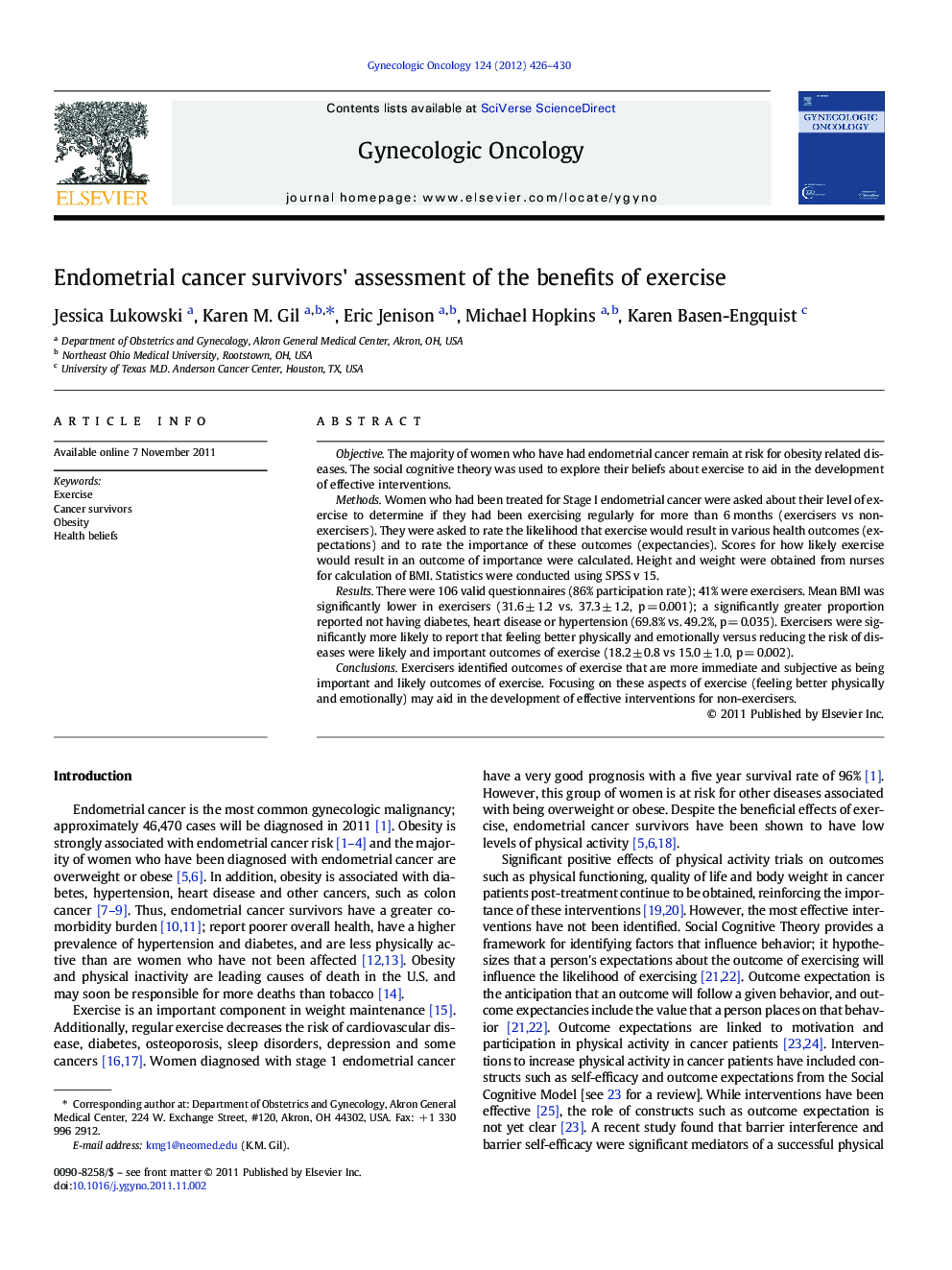| Article ID | Journal | Published Year | Pages | File Type |
|---|---|---|---|---|
| 3943904 | Gynecologic Oncology | 2012 | 5 Pages |
ObjectiveThe majority of women who have had endometrial cancer remain at risk for obesity related diseases. The social cognitive theory was used to explore their beliefs about exercise to aid in the development of effective interventions.MethodsWomen who had been treated for Stage I endometrial cancer were asked about their level of exercise to determine if they had been exercising regularly for more than 6 months (exercisers vs non-exercisers). They were asked to rate the likelihood that exercise would result in various health outcomes (expectations) and to rate the importance of these outcomes (expectancies). Scores for how likely exercise would result in an outcome of importance were calculated. Height and weight were obtained from nurses for calculation of BMI. Statistics were conducted using SPSS v 15.ResultsThere were 106 valid questionnaires (86% participation rate); 41% were exercisers. Mean BMI was significantly lower in exercisers (31.6 ± 1.2 vs. 37.3 ± 1.2, p = 0.001); a significantly greater proportion reported not having diabetes, heart disease or hypertension (69.8% vs. 49.2%, p = 0.035). Exercisers were significantly more likely to report that feeling better physically and emotionally versus reducing the risk of diseases were likely and important outcomes of exercise (18.2 ± 0.8 vs 15.0 ± 1.0, p = 0.002).ConclusionsExercisers identified outcomes of exercise that are more immediate and subjective as being important and likely outcomes of exercise. Focusing on these aspects of exercise (feeling better physically and emotionally) may aid in the development of effective interventions for non-exercisers.
► Survivors of Stage 1 endometrial cancer were asked their beliefs about exercise. ► Women self-identified as exercisers had significantly lower mean BMI. ► Exercisers believed feeling better was a likely and important outcome of exercise. ► Reducing the risk of disease was significantly less likely and important. ► These differences were not observed in non exercisers.
